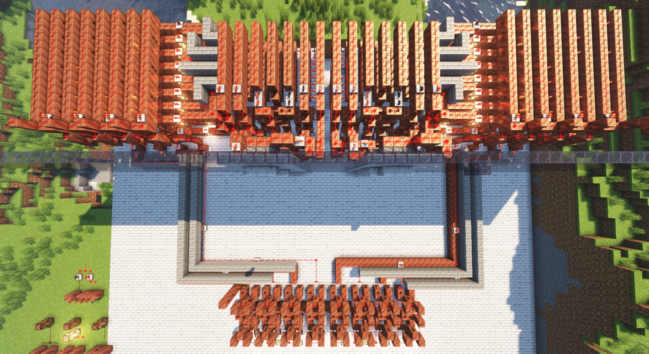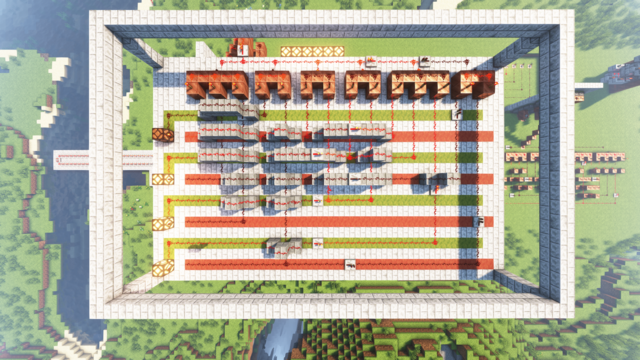@cliffwade Yeah, it's really nice. It saved my butt during COVID, as I could use it to continue teaching my embedded systems class, which has a considerable hands-on component. Together with simulator.io for the #digitalLogic part, it worked out pretty well.
Understanding Two's Complement
In the world of digital electronics and computing, dealing with negative binary numbers is a crucial task. This is where the concept of two's complement comes into play. Twos complement calculator is a mathematical operation used to represent both positive and negative binary numbers within the same number of bits.
So how does it work? Let's take an 8-bit binary number as an example. To obtain the two's complement of a positive number, you simply represent it as is. For a negative number, you follow these steps:
1. Take the absolute value of the number and represent it in binary.
2. Flip all the bits (change 0 to 1 and 1 to 0).
3. Add 1 to the flipped value.
The resulting binary value is the two's complement representation of the negative number.
Two's complement is widely used in modern computers and digital circuits because it simplifies arithmetic operations involving both positive and negative numbers. It eliminates the need for separate logic to handle positive and negative values, making computations more efficient.
While the concept may seem abstract at first, understanding two's complement is crucial for anyone delving into the intricacies of computer architecture, digital electronics, or low-level programming.
Reference:https://twoscomplementcalculator.com/
#TwosComplement #BinaryArithmetic #DigitalLogic #ComputerArchitecture
Two's Complement Calculator: A Comprehensive Tool & Guide - Two's Complement Calculator
For example, consider the 8-bit two's complement representation: To represent +5, we simply represent it as 00000101. To represent -5, we take the binary representation of 5 (00000101), invert all the bits to get 11111010, and then add 1 to get 11111011, which is the two's complement representation of -5.
@jangray can I trust Vivado to make a tight one-cell feedback loop for something like
reg q;
always @(*) if (a == b) q = a;
?
(this is Muller’s C-element AKA Karl Fant’s NCL TH22 threshold gate)
Been playing a lot of #minecraft over the last couple of weeks... Here is a #thread showing what is being built:
#8bit #redstone #sevensegment #display #norlogic #nor #and #or #not #rca #ripplecarryadder #fulladder #combinationallogic #digitallogic #truthtable #karnaughmaps #kmaps #sequentiallogic #quinemccluskey #tree #log #linear #fpga #fetch #execute #decode #load #store #pipeline #computerengineering #earlelatch #srlatch #dflipflop #dlatch #mux #bch #hexadecimal #register
@reduz Alas “technical” covers cosmic areas, but I miss the usenet communities of yore, like comp.arch and comp.arch.fpga.
Always ready to discuss anything related to #microprocessorarchitecture, #microprocessorimplementation, #digitallogic, and especially “paths not followed”, like #asynclogic, #blockstructureISAs, etc
Finally took the time to watch the talk by Lee Boysel (RIP): https://youtu.be/UpHN0kpukRc - super interesting. He's not as famous as he deserves to be, but he really did create the first microprocessor on a chip and many other things (see, eg. https://www.cpushack.com/2014/08/15/four-phase-systems-al1-processor-8-bits-by-lee-boysel/)
I've always been particularly interested in four-phase logic as it's extremely dense.
KW: #microprocessor #processor #DigitalLogic #FourPhaseLogic #VLSI #Architecture
Lee Boysel – Making Your First Million And Other Tips for Aspiring Entrepreneurs
Scott’s CPU From the Bottom Up
It isn't for everyone, but if you work much with computers at a low level, you'll probably sooner or later entertain the idea of creating your own CPU. There was a time when that was a giant undertaking, but with today's tools and FPGAs it is… well, not easy, but certainly easier. If you have the urge to try your own, you might have a look at [Simply Explained's] video series called "Building Scott's CPU."
The 11 videos cover everything from basic transistor logic to sequential circuits and moves on to things like ALUs, clock units, and how jump instructions work.
We are guessing there are some more videos forthcoming. However, these 11 videos are over two hours of content and that's a lot to get you started. Of course, everyone who does this usually focuses on one type of architecture by necessity but there are many ways you can design a CPU. Many homebrew designs are simple multiple clock per instructions designs. A few use pipelining to get an instruction per clock once the pipeline fills up. Modern CPUs do lots of tricks to actually execute, on average, multiple instructions per clock cycle, but that complicates a lot of things.
Then there are the non-traditional architectures like single-instruction computers or asynchronous CPUs. The point is, once you know how a basic CPU works, there is still plenty of room to innovate in your own design.
We've been through this exercise more than once and -- in our opinion -- the hardest part isn't creating the CPU. It is building all the ancillary tools you need to do anything useful. There are some hacks to make that easier. On the other hand, it is possible to do everything from A to Z.
Al Williams Tells All in the Logic Simulation Hack Chat
The list of requirements for hosting one of our weekly Hack Chats is pretty short: you've got to be knowledgeable, passionate, and above all else, willing to put those two quantities on display for a group of like-minded strangers. Beyond that, we're not too picky. From industry insider to weekend hobbyist, high school dropout to double doctorate, if you've got something interesting to talk about, we're ready to listen.
But in casting a such a wide net, we occasionally forget that we've got a considerable collection of potential hosts within our own worldwide roster of contributors. Among this cast of characters, few can boast the same incredible body of knowledge as Al Williams, who was able to pencil in some time this week to host the Logic Simulation Hack Chat.
Or at least, that was the idea. In reality the Chat covered a wide range of topics, and was peppered with fascinating anecdotes pulled from Al's decades of experience in the field. Though to be fair, we expected no less. He was building hardware before many of us were born, and can take credit for designs that have been at the bottom of the ocean as well as launched into orbit. He's been writing about it just as long too, with articles of his appearing in iconic print magazines such as Dr. Dobb 's Journal.
Al has seen and done so much that he still surprises us with the occasional nugget, and we've been working with him for years. It was only a week or two back that he started a story with "Back when I used to manage a gas pipeline…" in the middle of a conversation about utility metering.
Of course, that's not to say some technical discussion didn't sneak in there from time to time. Sure Al's recollection of how they used to literally crawl over the schematics for the 68000 back at Motorola might stick out as a particular high point, but he also explains his personal preference for vendor-specific software tools over their more generic open source counterparts. He also draws comparisons between hardware description languages (HDLs) like Verilog and parametric CAD tools such as OpenSCAD in the way that they help model complex relationships in ways that can't be easily done by more traditional means.
At one point the conversation lingers on the design and production of application-specific integrated circuits (ASICs), and how they compare to field-programmable gate arrays (FPGAs). Traditionally ASICs have been out of reach for the hobbyist, but with the recent collaboration between Google and SkyWater Technology to create an open source process design kit (PDK), they're now within the capabilities of a dedicated individual. Matt Venn spoke on the topic during Remoticon 2021, and it's good to see more folks in the community openly discussing the possibilities of custom silicon designed by hackers.
From there, things start really getting wild. From dreaming of virtual reality circuit simulators that let you fly amongst your creations like in Tron , to salivating over high-end technologies such as reflective memory, this Chat really runs the gamut. But then, that's sort of why we hold them in the first place. Whether you actively participate or are just along for the ride, the Hack Chat gives everyone in the community a chance to gather around a virtual water cooler with fascinating characters that you won't find anywhere else.
The Hack Chat is a weekly online chat session hosted by leading experts from all corners of the hardware hacking universe. It 's a great way for hackers connect in a fun and informal way, but if you can't make it live, these overview posts as well as the transcripts posted to Hackaday.io make sure you don't miss out.
#hackadaycolumns #asic #circuitsimulation #digitallogic #fpga #hackchat #hdl #verilog


